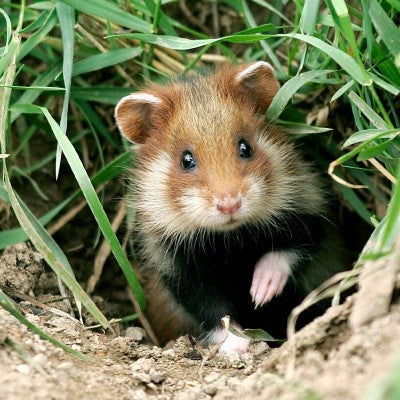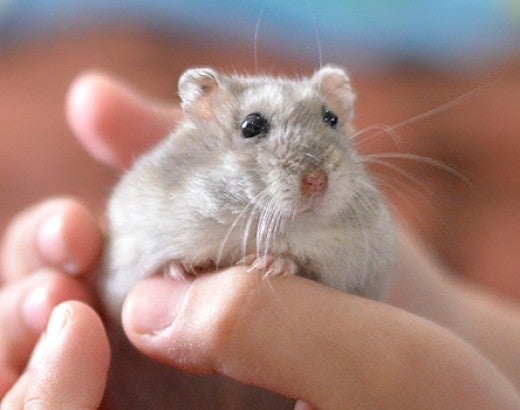Wild hamsters gather their food (seeds and grains) in deserts, grasslands and croplands, using their chubby cheek pouches to carry home what they find and store it in burrows. Pet hamsters need more than a clean cage, food and water—like pet gerbils, they should be given plenty of litter to dig in, tubes to crawl through, soft paper or cardboard to chew up for nests, a wheel to run on and daily supervised play time outside their cages.

Most hamsters kept as pets in the United States are the descendants of a family of Syrian (golden) hamsters—one of 26 species found in the Middle East, Europe and Asia—captured in the wild in 1930 by an expedition looking for animals to breed for labs. Just like pet hamsters today, the first captive animals chewed through boxes and slipped through cracks: Five of 10 babies escaped.

Because their incisor teeth never stop growing, hamsters require hard biscuits or wood chews to gnaw on.

For every animal saved, countless others are still suffering. By stepping up for them, you can create a future where animals no longer have to suffer in puppy mills, factory farms, testing labs or other heartbreaking situations. Start saving lives today!



